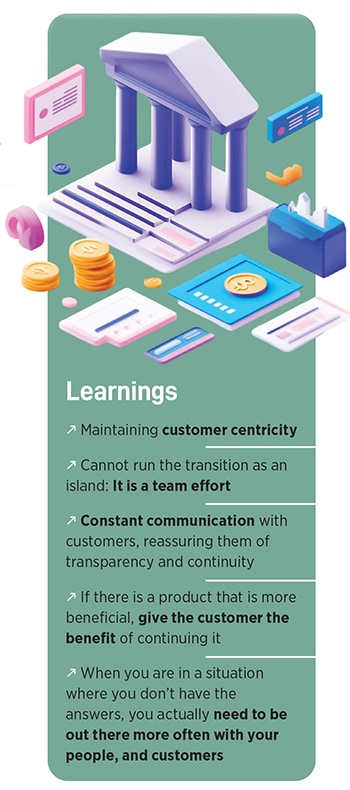How Axis absorbed Citi's consumer business
It was worth the time and effort, Axis Bank's CEO and MD Amitabh Chaudhry tells Forbes India, and the move pit the bank across the spectrum


Acquisitions in banking are often case studies in themselves, where learnings go well beyond the intricacies of a normal deal. This is exactly what happened when Axis Bank completed the acquisition of Citibank’s consumer banking business in September last year, two-odd years after the agreements were signed.
It was worth the time and effort, says Axis Bank’s CEO and MD Amitabh Chaudhry. “We were a mass affluent franchise... acquiring Citi has positioned us across the entire spectrum," he says (see Q&A).
The deal brought benefits in terms of a superior credit card franchise, expanding Axis’s wealth management business and cross-selling to Citi customers—2.4 million in all. In the credit card space, Axis is still the fourth largest credit card issuer in India, but issuance, spending and loans on credit cards for the ecosystem in India have been under pressure for the past six to eight months.
This has meant that the cards-in-force issuances (aided by known-to-bank partnerships) has slipped to 770,000 as of the fourth quarter of 2024-25 (Q4FY25), compared to more than a million in Q2FY23 (see details in main story).
 Arjun Chowdhry, group executive for affluent banking, NRI, cards/payments and retail lending at Axis Bank, explains what made this deal different from most others. “Citi’s decision was actually an exit from a line of business and not an exit from any particular country. It was linked to their global strategy and what the bank thought was best for their shareholders at that point in time. The business being sold was comprehensive and akin to a small bank. So, it required us to extract the business and then transfer it, rather than an actual transfer of a legal entity in entirety."
Arjun Chowdhry, group executive for affluent banking, NRI, cards/payments and retail lending at Axis Bank, explains what made this deal different from most others. “Citi’s decision was actually an exit from a line of business and not an exit from any particular country. It was linked to their global strategy and what the bank thought was best for their shareholders at that point in time. The business being sold was comprehensive and akin to a small bank. So, it required us to extract the business and then transfer it, rather than an actual transfer of a legal entity in entirety."
Listen: Leadership, Risk, and Reinvention: Amitabh Chaudhry"s new playbook for Axis Bank
There were two interlinked objectives: Preservation of morale and preservation of value. Customers who had been banking with Citibank for years had apprehension over retaining their funds, their features and benefits, even the functioning of their credit cards and their reward points. Some wealthy Citi customers are learnt to have opted to bank elsewhere when the deal was announced, but for Axis it meant strengthening its position in the top eight metros.
Chowdhry did 20 to 30 calls each day with cohorts involving all the teams—business, frontline, HR, support systems, legal, compliance—separately and aimed at addressing all apprehensions. “We retained more than 85 percent of the customer value (indexed value). After transitioning to Axis Bank, that has grown to more than 100 percent, indicating a rise in value across key verticals which were acquired."
On the wealth management front, there were benefits too. Subrat Mohanty, executive director (banking operations & transformation) at Axis Bank, says most boutique wealth management firms focussed on generational wealth in the large metros. “We have a larger footprint, we find wealth generation in traditional and outside of these cities." Axis also focussed on creating Burgundy partners who work with family offices and HNIs in those locations.
The bank’s wealth management business is among the largest in India with assets under management (AUM) growing 10 percent annually to `5.92 lakh crore as of FY25. Burgundy Private, which caters to high and ultra-high net worth individuals, covers 13,384 families, with an AUM of `2.12 lakh crore, up 16 percent year on year.
First Published: May 15, 2025, 12:29
Subscribe Now